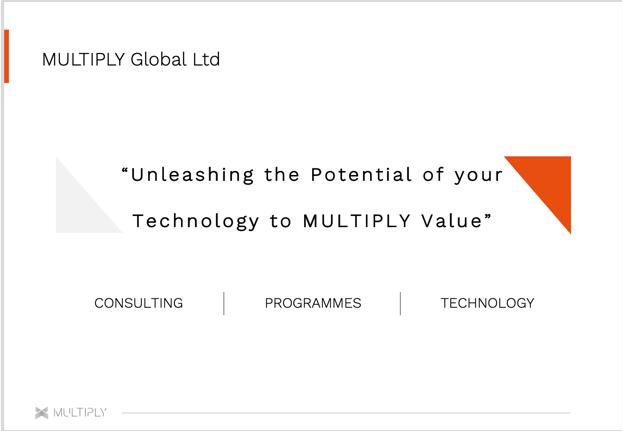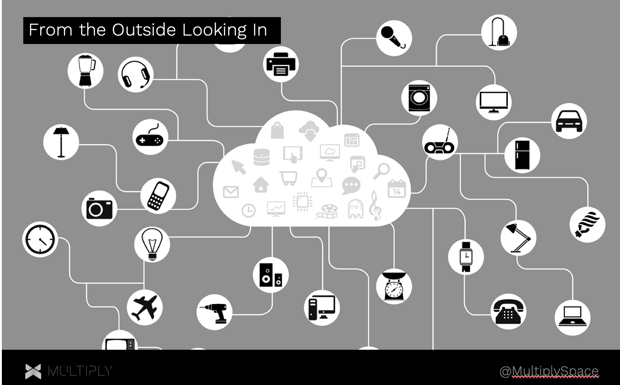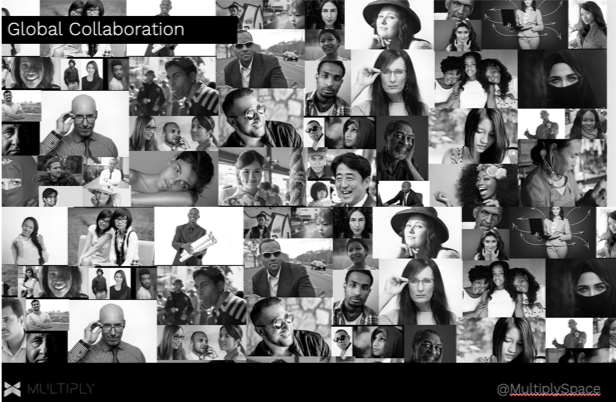September 2019 saw the bi-annual UK Space Conference at the ICC in Wales. The UK and international space community met over three days of talks, exhibitions and networking and MULTIPLY’s CEO, Natasha Allden, was invited to speak in one of the parallel sessions – Back down to Earth: Out of this world innovation improving life on Earth. The session was hosted by Katherine Courtney and had speakers including Daniele Tricario and Imtiaz Shams which looked at some key examples from downstream applications, upstream spin-outs, and what innovation in earth applications really means.
This is Natasha Allden’s transcript from the talk.

“I’ve been commercialising technology into new markets and applications for ten years. From mobile apps to rocket engines. The common denominator across most companies commercialising technology into new markets and applications is that the majority of the time it is ad-hoc, responsive.
The thought I’d like to leave with you today is what would happen if we pro-actively, deliberately built and deliver technology transfer programmes.
We know space technology has many applications from health, transport, infrastructure to energy and many benefits. Most of the deliberate technology transfer programmes we see today are coming from government agencies like ESA and NASA. The NASA technology transfer programme has realised $2.2bn in revenue, $18bn in savings, created nearly 19,000 jobs and saved 450 lives between 2010 and 2015.
So why are we not all doing this?
From our work in the industry we have seen three core reasons that are common barriers to companies doing technology transfer:
- Distraction from core business
- Knowledge and access
- Budget and bandwidth
These are the barriers MULTIPLY work to overcome.

My name is Natasha Allden, I founded MULTIPLY in 2015 with the simple mission to unleash the potential in technology and people to MULTIPLY value. This can manifest as funded programmes, taking products to market, collaborations, private investment. To do this we have three pillars of activity – consultancy, advanced engineering programmes, technology development.
To do this we have developed a proprietary framework based on the design thinking principle that has repeatedly delivered value for our clients. We have a diverse team with a global network that ensures broad and creative thinking in every client brief.
Today I would like to share two key themes and how we use them to deliberately MULTIPLY value through dedicated technology transfer.

‘Outside-in’, is about looking for opportunities by starting from a different perspective including:
- Market trends, not of the space industry but of energy with hydrogen, infrastructure with EV charging networks, autonomy in automotive, self-diagnosis in the health industry and many more.
- Customer led, truly customer-led, what does a customer really want? Do they want a coffee flask or is it a way to save money and enjoy their favourite hot drink any time of the day anywhere?
- It is about deconstructing the technology, take a water glass. You could say “that is the best water glass ever made”, we would look at it and say that this is a vessel that holds 100ml of liquid at ambient room temperature, with a stable flat base and a friendly user interface.
Take the example of the IoT as an industry trend to transfer technology from space into:
- Constant service is required; this is the upstream space business all day long.
- However, sensors in IoT are dropping in price from $1.30 to $0.60 – how can manufacturing expertise, cutting edge technology in sensors that we are using in upstream space be commercialised and commoditized for IoT?
- There is a movement toward acquisition by companies like Siemens to gain an advantage in the IoT race. Maybe we need to look at how we define ourselves. Are we space companies or are we providers to another industry as well, are there collaborations or funding we are not tapping into?
It is important to recognize the difference of space as an enabler i.e. satellite data land management and space as a solution like satellite imaging sensors for medical equipment or thermal management from rockets into electric vehicles. It also works both ways where non-space companies can also transfer into space.

Global collaboration has been referenced a number of times today at the plenary session. Collaboration is about supply chain, R&D, exploitation, de-risking and ultimately about scaling; efficiently accelerating a route to market. It is about crossing the TRL chasm.
The critical thing about collaboration is that it doesn’t mean giving away IP. It’s about playing to your strengths. In space what we do are complex system integrations and as such means collaboration.
Collaboration is about addressing more than geographic borders. It’s about diverse creative thinking (Google wasn’t the first search engine, Facebook wasn’t the first social media platform). It is about overcoming budget challenges, resource restrictions, access to equipment and more.
MULTIPLY builds collaborative programmes to bring the best brains and capabilities to a challenge. Our autonomous programme includes companies from defence, emergency services, aerospace, surveillance, robotics, automotive and the gaming industry.
One of my favourite examples I heard a number of years ago at a digital conference was given by a paediatrician who worked at St Ormond Children’s hospital. They had a challenge to increase the chance of survival for critically ill babies not when on the surgery table but on the transition from the surgery table to the recovery room. It is a highly complicated operation with tubes, monitors and an entire team of doctors and nurses. The longer the transition from surgery bed to recovery bed, the greater the risk. One day he was watching Formula 1 and saw a pit stop. He saw the way the team were perfectly orchestrated to get a car in and out of the pit stop within seconds. So, he brought in a Formula 1 team who helped him and his team design a process to reduce transition times, right down to where each member of the team places their feet – it was a huge success reducing transition time and saving lives.
So, I’d like to leave you with the thought we started with. Imagine what could be achieved. What revenue could be generated? What costs saved? What jobs created and what lives saved? Simply by pro-actively delivering technology transfer programmes, looking from the outside in, and collaborating with people beyond our borders.”